I have been rebooting my 2010-era design practice. I've been workshopping two maps: an "Activity Bingo Board" for task selection and a "Busy Busy Sri" for task pacing. I'm hoping these help with execution coming up later this month.
Starting with "The Map of Values"
Back in August I had done a brain dump pass where I unloaded every thought in my mind and then sorted them into groups. After that I was stuck for a while, so I decided to redraw it and see what happened.
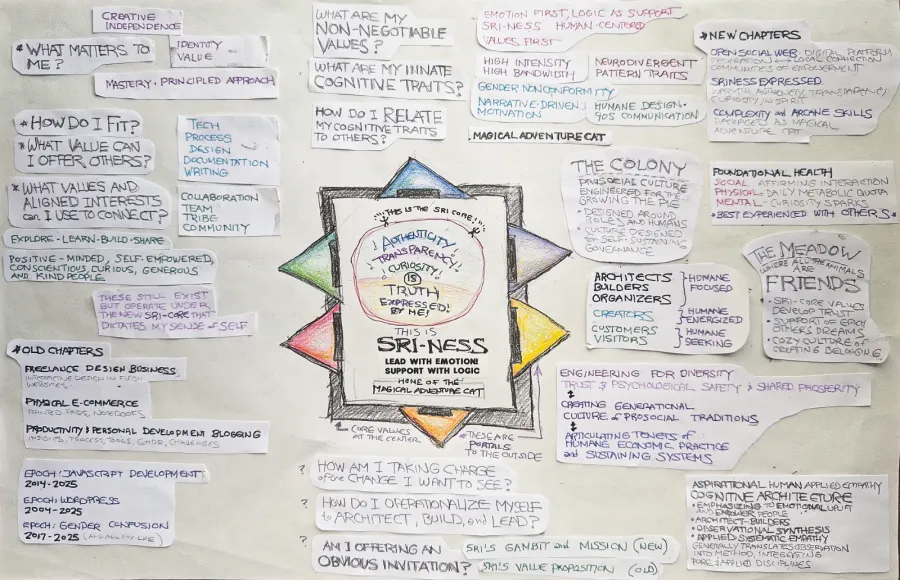
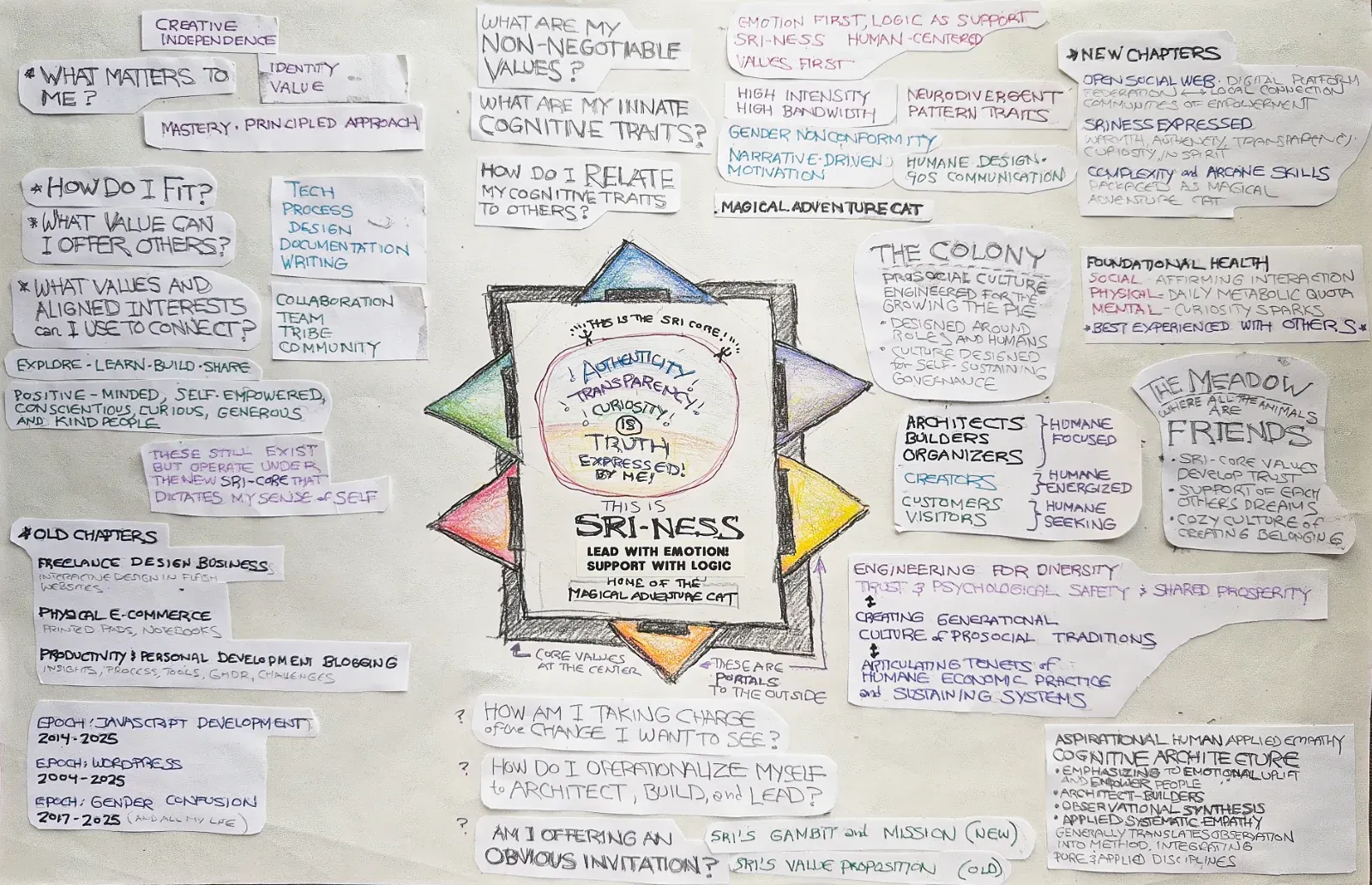
The first brain dump pass was really helpful in articulating everything that was important to me, but didn't have a central idea for me to latch onto.
By comparison, this diagram started by declaring my values to remind myself that they are my central reference pointThe Sri Core Values are Authenticity, Transparency and Curiosity in my personal communication by which I measure my actions.
The various islands of text in the periphery are the ideas that I've stuck with over the years. Many of them are from prior Groundhog Day Resolutions, as well as insights gleaned from personal transitions.
I found this diagram is great for reflection on my current understanding of my desires, but lacks the action element that I think is necessary to make progress.
Categorizing with "The Activity Bingo Board"
I have a lot of project ideas all the time, and had a hunch that there were some overall patterns I could identify. For me, a project is ideally something that gives me a new useful capability that relates to one of the desires in the Map of Values above.
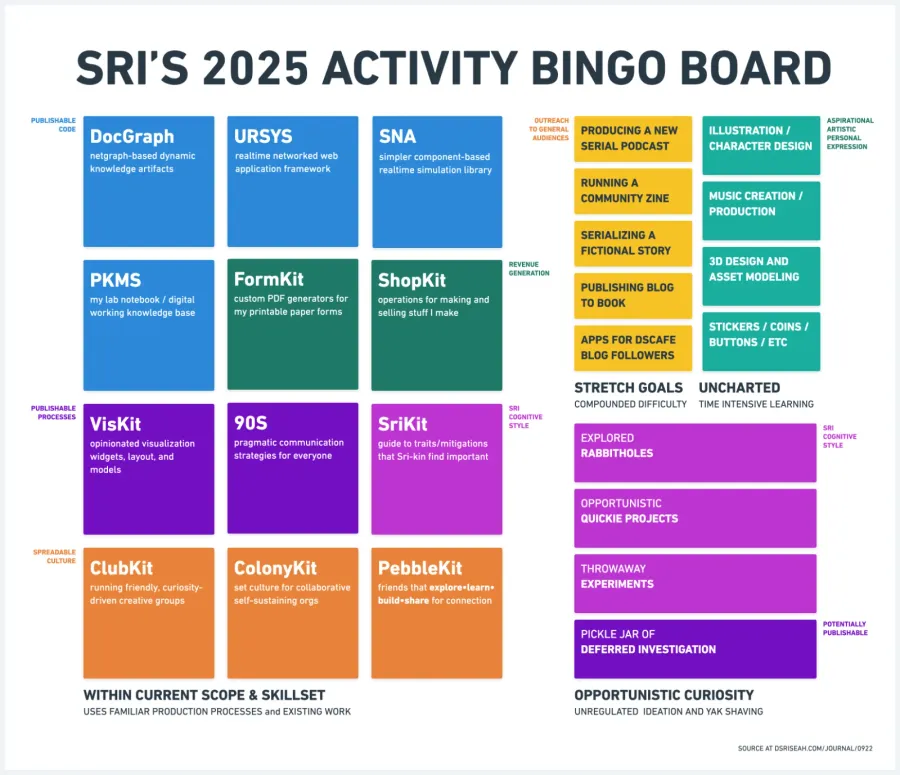
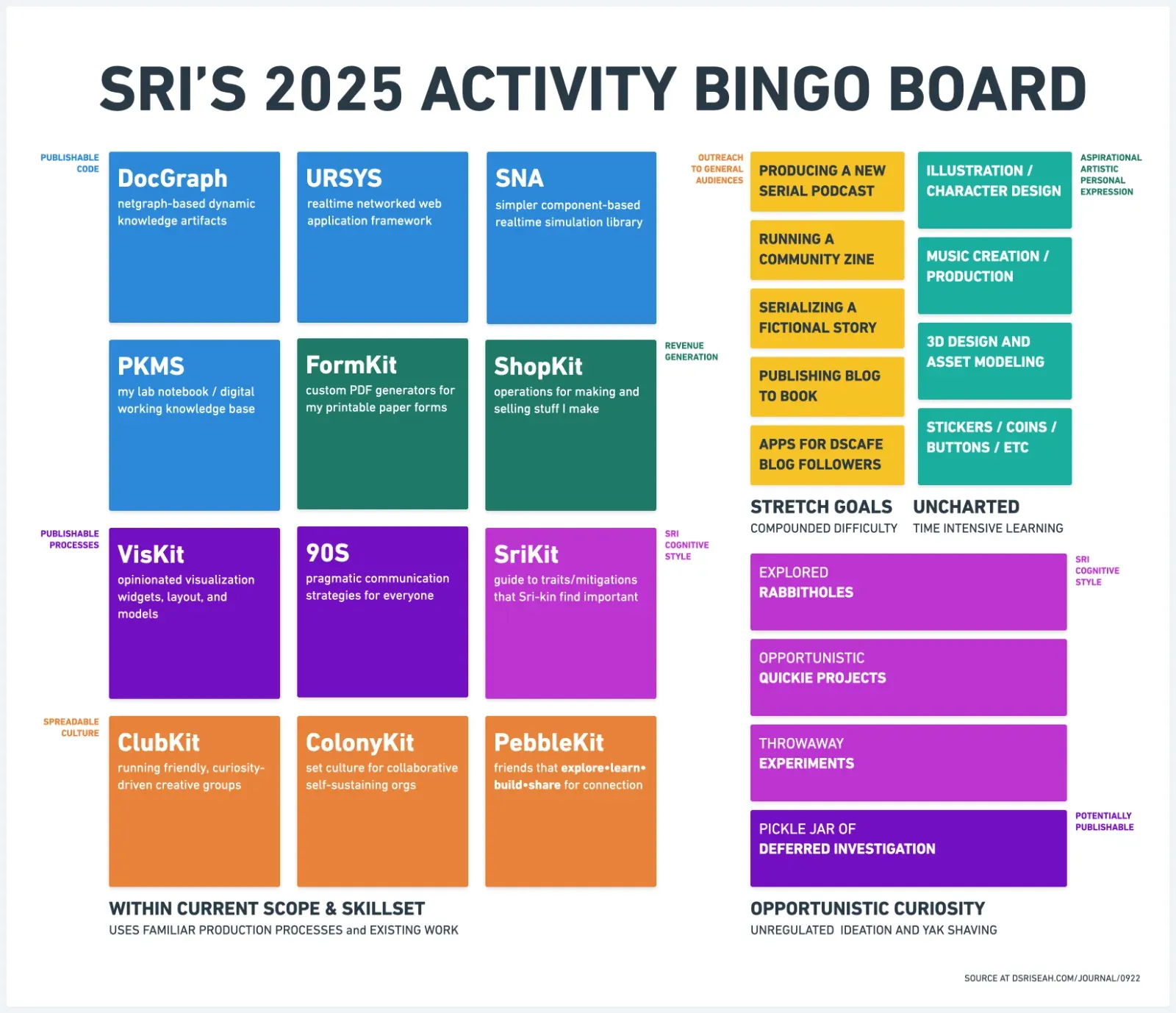
Broadly, the projects fall into the following categories:
- software projects
- internal processes
- personal expression
- teachable theories
- community building
I go into more detail in the blog post A Bingo Board for Task Focusing, but the general idea is that these all produce some tangible artifact that can be SENSED and EASILY SHARED: important qualities for piqueing the interest of others through Show Don't TellMy personal framing of "show don't tell" that showing someone a shiny object is a lot more interesting to them than a lot of talking. See the Wikipedia entry for other contexts..
So far, the diagram works well in two use cases:
- When I don't know what to do - I can scan the blocks and be reminded of something in one of these blocks. There are ample projects within these boxes that produce specific benefits for the future. This is good when I have a lot of motivation
- When I don't know what I did - This is the non-intentional version of creating value. Sometimes I'll explore a rabbithole or chase an idea that produces something tangible. With this diagram, I can figure out where it goes and feel that I've accidentally made progress.
It doesn't help as much when I am in the low-energy dissociated stateSymptoms: lack of interest in anything, boredom-induced fatigue, inability to imagine anything good in the future. Root causes are difficult to diagnose as this overlaps with lots of other things from poor nutrition, bad experiences, hormone imbalances, social stress, etc.. This is when it's hardest for me to start. My motivation super low. I am stuck in my head, unable to see the future or imagine anything good. This may sound familiar to people with neurodivergent traits association with Autism Level 1 and ADHD.
Zooming-in with "Sri's Busy Busy World"
One way to mitigate the low-energy state I described above is to provide some kind of external scaffolding. So I draw this diagram, starting with the cat head in the middle and seeing what expanded out from it; this is a common starting point for me when I don't know what I'm drawing.
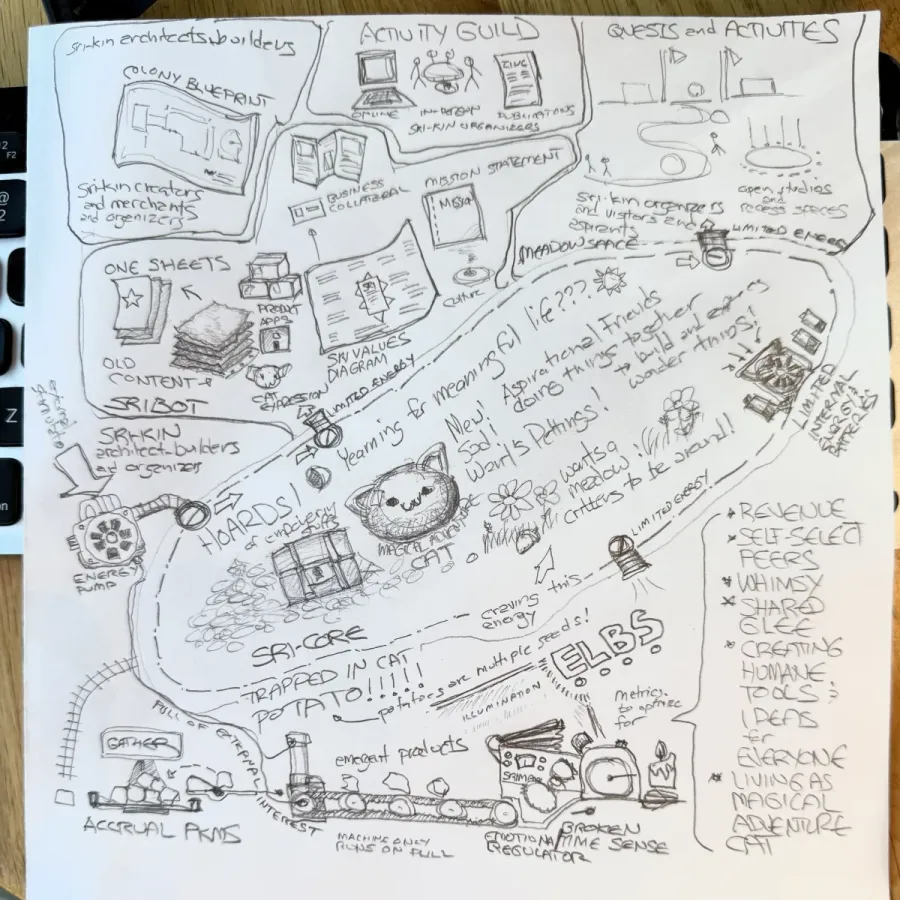
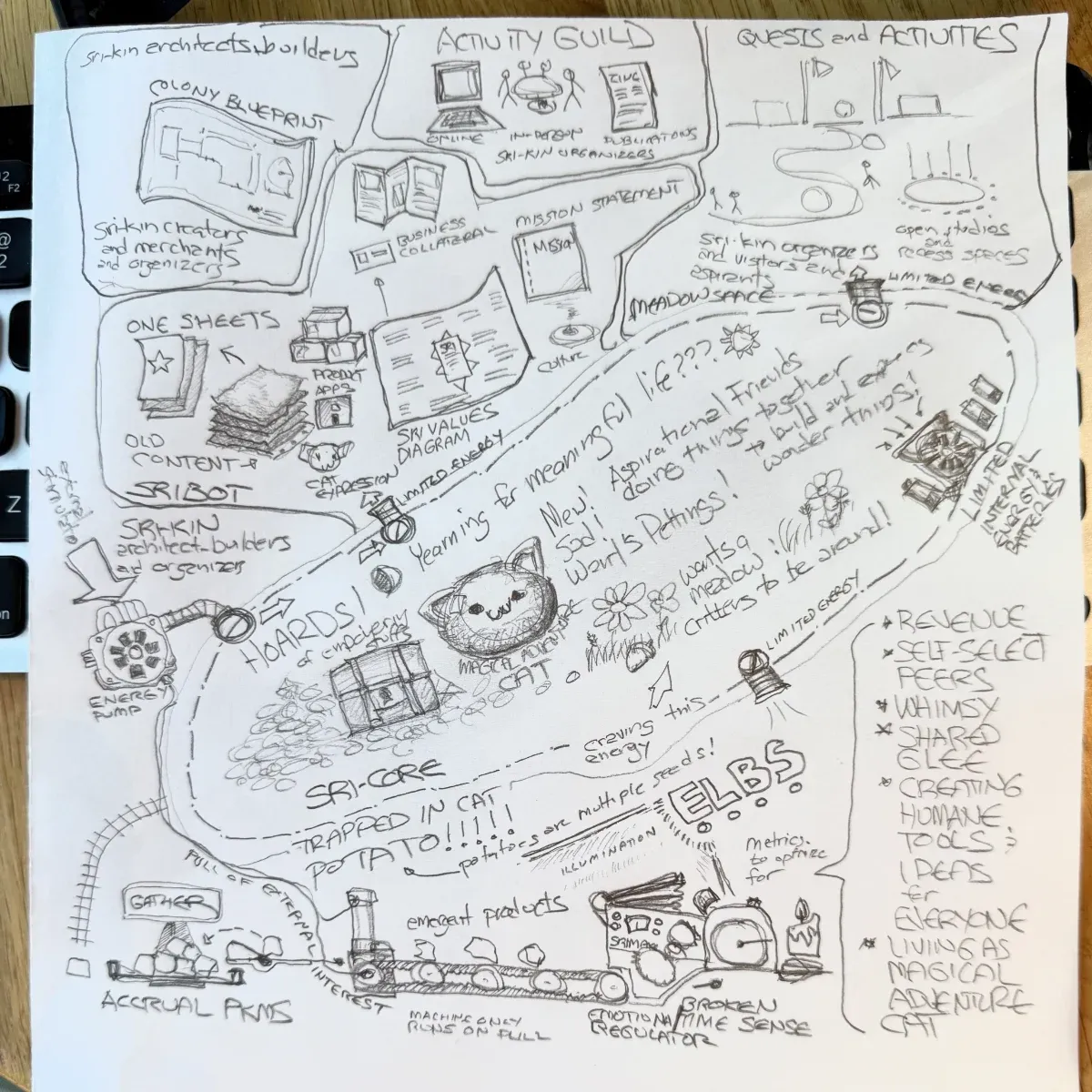
As I was doodling this, I was reminded of Richard Scarry's Busy Busy World and What Do People Do All Day featuring animals going about their business in town, driving firetrucks, and baking bread. I loved these books as a kid, and I dare say that my interest in infographics was implanted then.
In my not-Scarry version:
- There are ARTIFACTS being produced (upper left) that have the desired "show don't tell" tangibility that will draw attention of others
- There are SOCIAL ENERGY GENERATORS (upper right) where I hope that people might want to hang out and do things for fun
- There are the YEARNINGS and DESIRES (center) that preoccupy my moment-to-moment existence. I need the right VALUES-BASED ENERGY to function effectively, which can come from the OUTSIDE ENERGY PUMP (the pump on the left) or a very small INTERNAL GENERATOR (the little generator with the batteries on the right) so I don't fall into a non-productive state. This all gets routed through the various INJECTORS which are valved to represent how intentional I need to be with what energy I have for the dayNot dissimilar to spoon theory methinks..
- There is the PRODUCTION MACHINERY (bottom) which loosely references my emergent, exploratory approach to making stuff. On the right of this is the list of HIGH QUALITY RESOURCES that make the process go smoothly.
Assessment
They're pretty rough, but good enough to work with. The important thing is to have something to look at to find where I am in any one of these contexts. I'm sure they will evolve and transmogrify into different forms.
We chat about personal projects and challenges on the DS|CAFE Community Discord Server every day. Come visit! Maybe you'll make some friends!
You can reach me at Mastodon or Bluesky. Or subscribe to the blog feed to stay up-to-date.